Mid-century modern movement was a momentous period in the history of modern furniture design. Mid Century Modern aesthetic was marked by simple geometric and organic shapes that fuse form and function. Though visual and extravagant designs had been popular for centuries prior, the Mid-Century modern furniture movement introduced a new wave of simple, sleek designs that stripped away anything that did not serve a specific purpose.
Known as the golden age of the “Modern Chair”, this period gave birth to many of the most recognizable and iconic mid century chairs that continue to influence modern furniture designs to this day.
This article presents the most comprehensive guide on the internet of all the most famous mid century chairs ever created. From the Eames Lounge Chair to the Wassily Chair, this guide covers all the classic designs that have shaped the mid century modern movement.
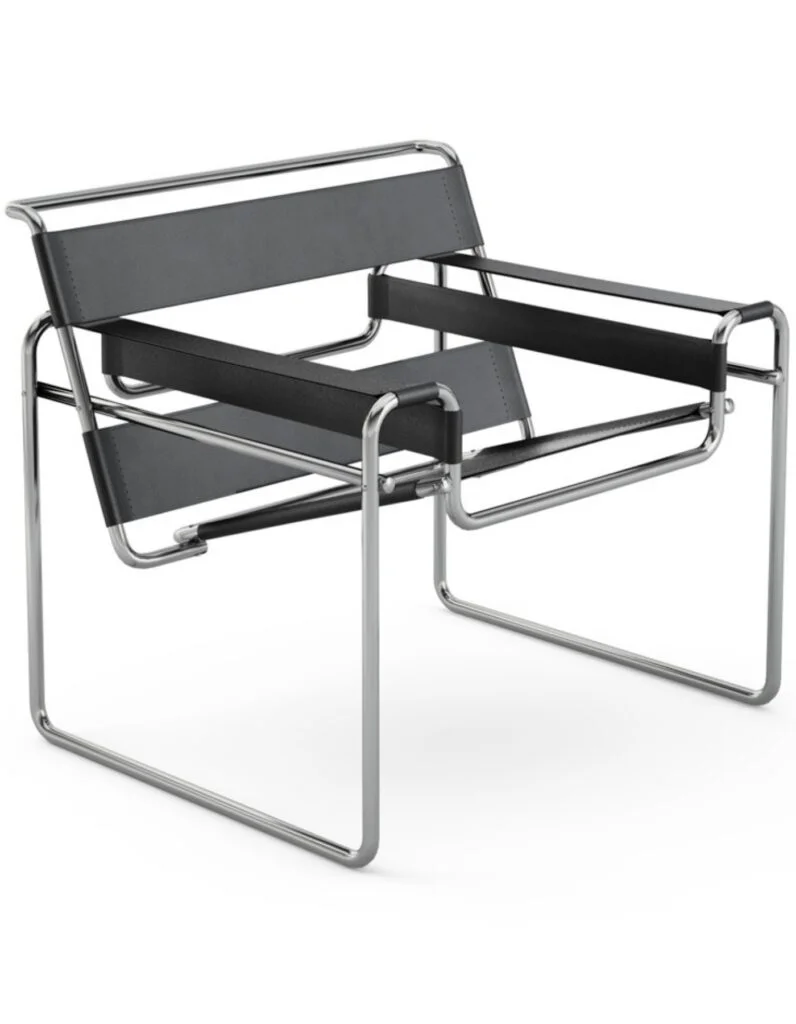
Wassily Chair
Designer: Marcel Breuer
Year: 1925
Wassily chair by Marcel Breuer became a symbol of the mid-century era despite being designed in 1925. Breuer developed the design from the metal frame of a bicycle while studying at the Bauhaus, a renowned school of art and design that operated from 1919 to 1933 in Weimar, Germany. A cool fun fact about the chair is that it’s named after his classmate, famous 20th century painter Wassily Kandinsky!
LC3 Grand Modele Armchair
Designer: Le Corbusier, Pierre Jeanneret, Charlotte Perriand
Year: 1928
In spite of being such a dense and commanding chair, the LC3’s design is minimalistic. It’s thick, plush, and inviting while supported by a tubular steel frame. The Le Corbusier group, where Perriand got her start, dubbed their LC3 “cushion baskets,” an apt name for a mid century chair made primarily of cushions.

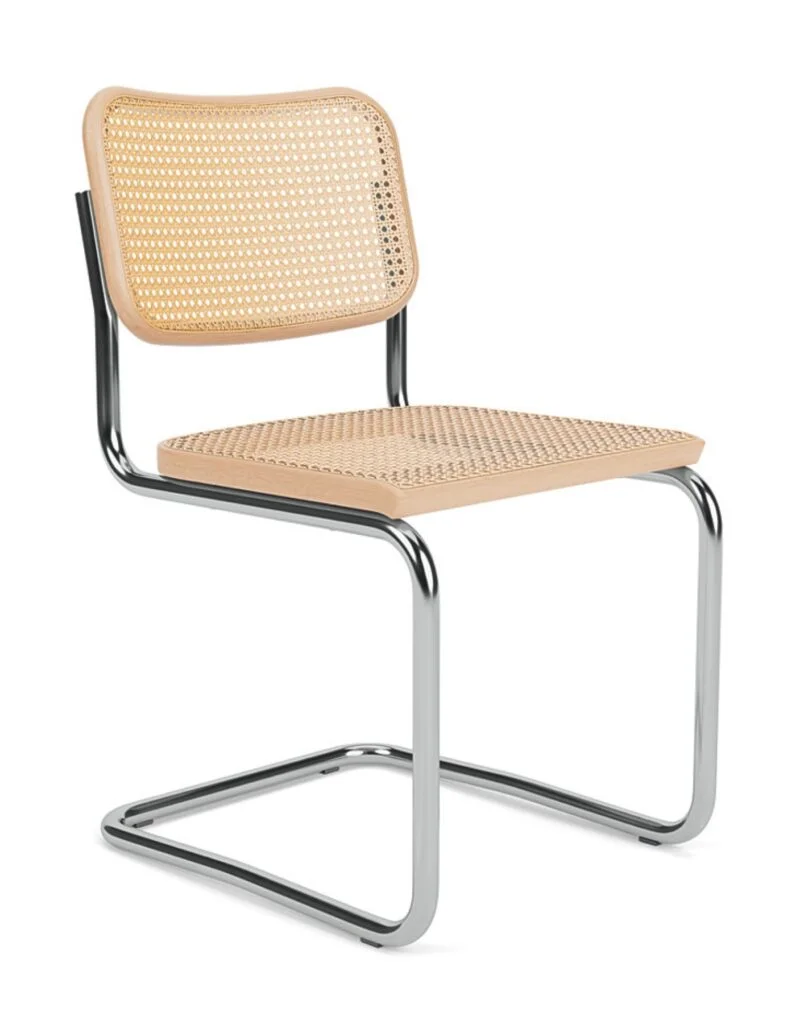
Cesca Chair
Designer: Marcel Breuer
Year: 1928
In general, sequels don’t work, except when it’s Marcel Breuer following up his Wassily Chair with the Cesca, named after his daughter Francesca. As with the Wassily, the Cesca is made of bent tubular steel and comes either upholstered or in wood or cane. This mid century iconic chair is both aesthetically pleasing and comfortable thanks to the combination of steel and natural materials.
LC4 Chaise Lounge
Designer: Le Corbusier, Pierre Jeanneret, Charlotte Perriand
Year: 1928
One of the forerunners to mid century chairs was this chaise lounge, designed by legendary trio Le Corbusier, his cousin Pierre Jeanneret and the young architect Charlotte Perriand all three paved the way for many of the iconic mid century modern chairs on this list. Nearly a century after its debut, the LC4 aka The Relaxing Machine is still considered a modern-looking piece of furniture.
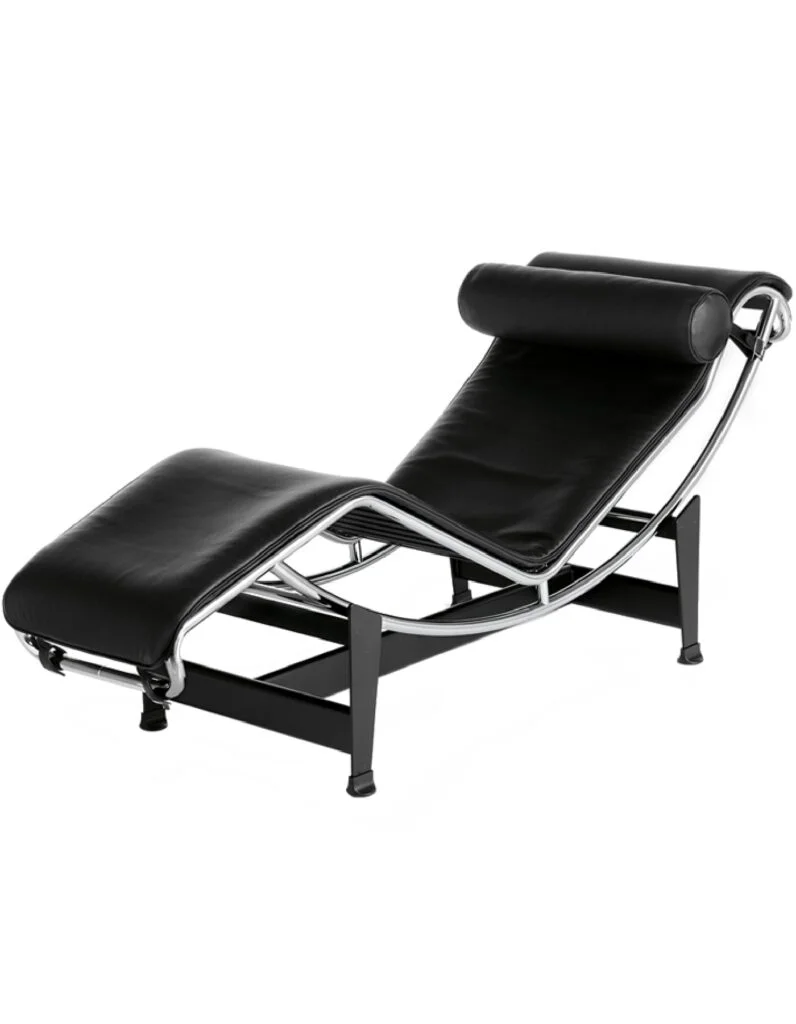
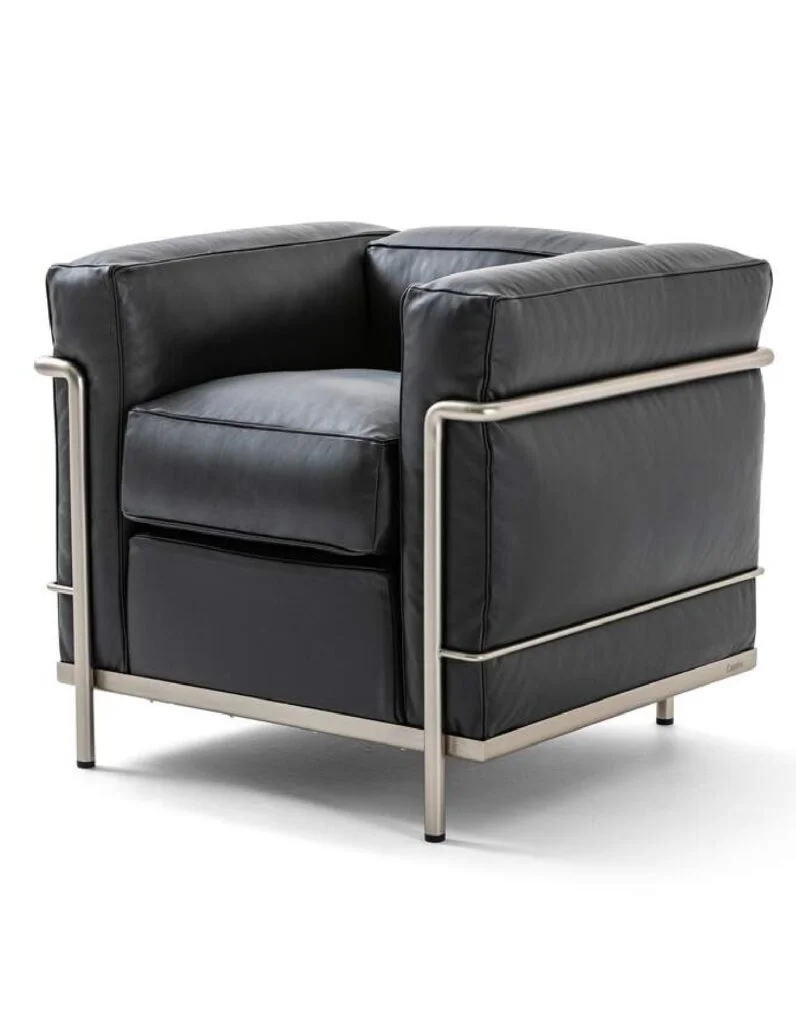
LC2 Poltrona Armchair
Designer: Le Corbusier, Pierre Jeanneret, Charlotte Perriand
Year: 1928
In the history of furniture design, the LC2 armchair has played a major role. Designed to enhance conversation, this armchair was displayed at the 1929 Salon d’Automne in Paris. An in-depth study of human posture and body, as well as the use of mathematical language to create proportions that resonate with universal harmony, guided the design of this chair.
Barcelona Chair
Designer: Ludwig Mies van der Rohe
Year: 1929
Ludwig Mies van der Rohe stood alongside Le Corbusier as another trailblazing architect. Barcelona Chair is an example of how less is more when it comes to concept and execution. The chair still maintains the luxury reputation it was given nearly a century ago, as it is often seen in ritzy hotels and upscale department stores.
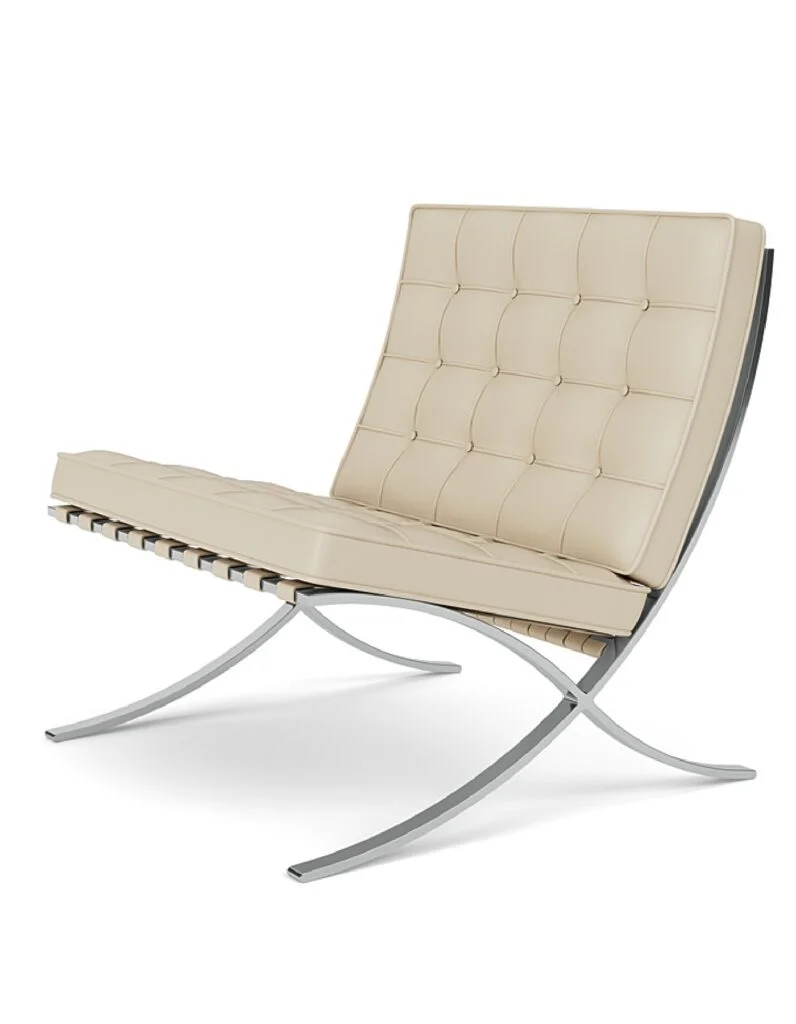
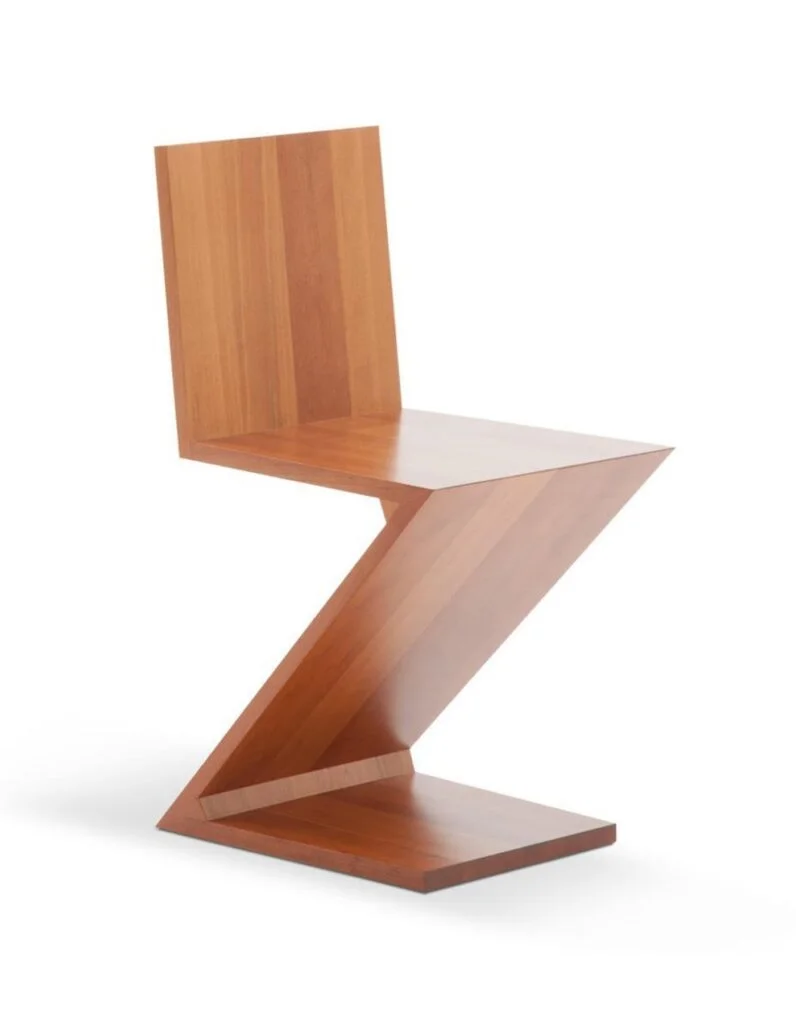
Zig-Zag Chair
Designer: Gerrit Thomas Rietveld
Year: 1934
Gerrit Rietveld’s 1934 Zig Zag chair was designed for a Dutch department store in search of a design that could be easily mass-produced. Rietveld jokingly described this design as “not a chair but a designer’s joke.” The result was stunningly simple, comprised of just four pieces of wood for a striking silhouette. The chair is now produced by Cassina.
637 Utrecht Armchair
Designer: Gerrit Thomas Rietveld
Year: 1935
Despite being over 70 years old, the 637 Utrecht Armchair by Dutch designer Gerrit Rietveld is still as unique and cutting-edge as ever. Designed in a way that made a statement at its time, this vibrant sculptural armchair continues to turn heads to this day. You will love how eye-catching angles and vivid colors make this vibrant design stand out in your home.
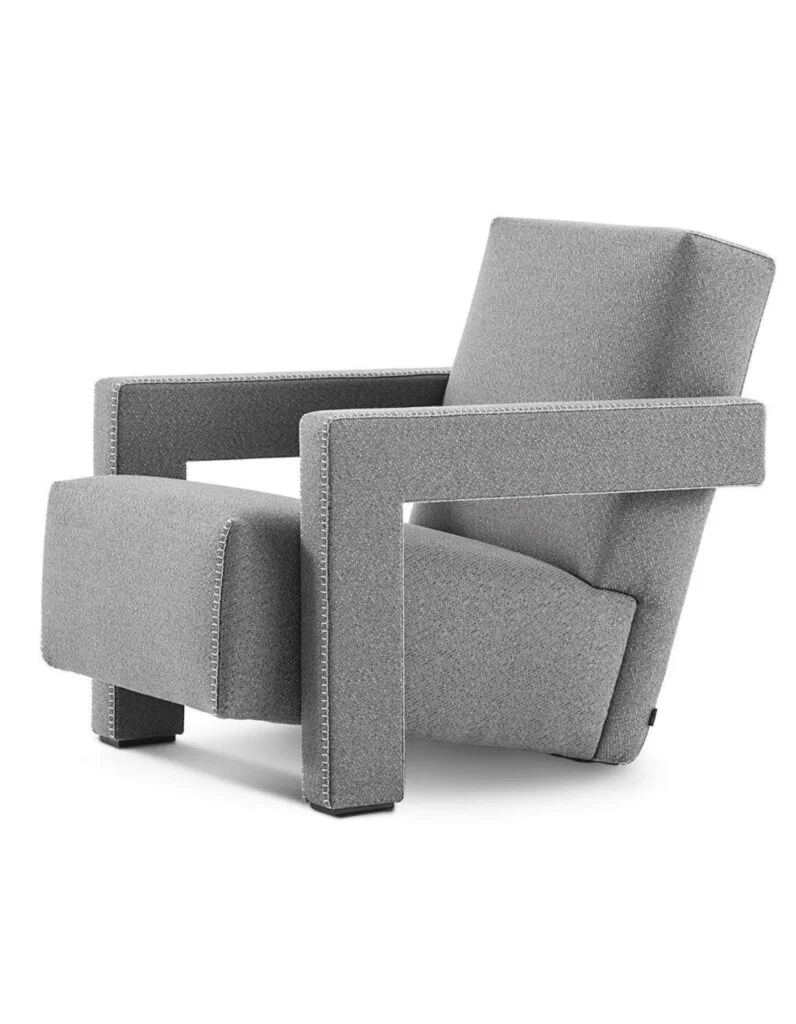
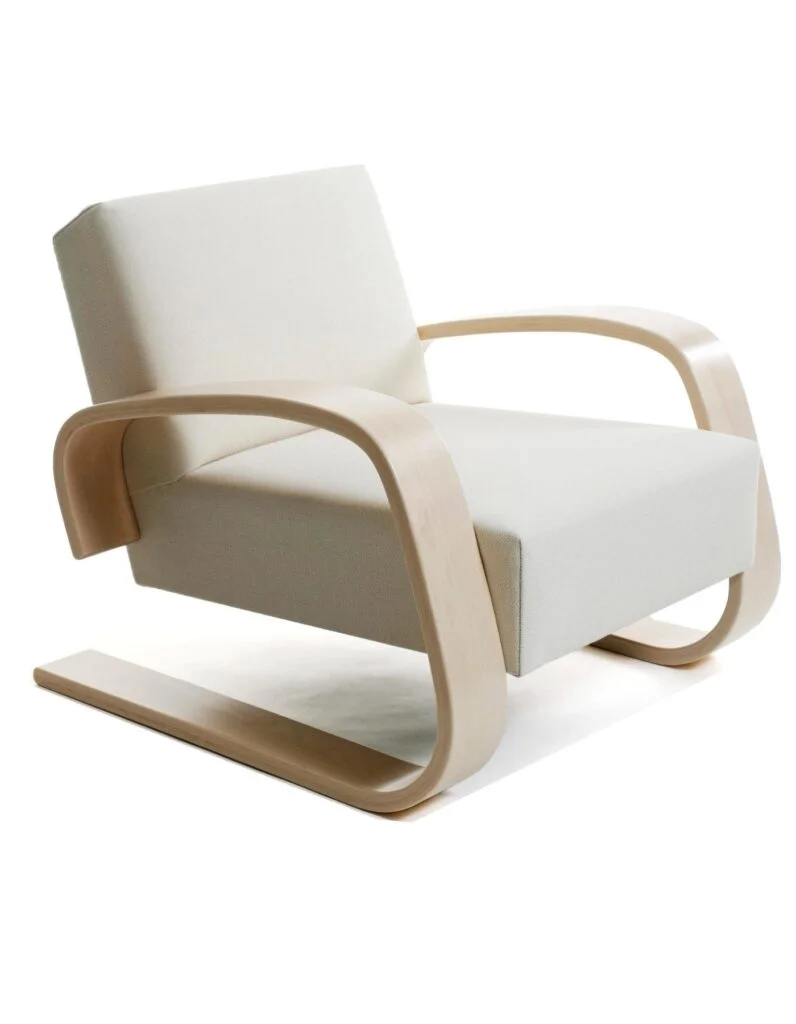
Armchair 400 “Tank“
Designer: Alvar aalto
Year: 1936
This chair is nicknamed the “Tank” due its distinctive wide and sturdy armrests made of form-bent birch lamella and to its voluminous upholstery. The springy cantilevered frame offers a flexible, comfortable seat. A favorite since the 1930s, Armchair 400 remains effortlessly modern and can be upholstered in any material.
Isokon Long Chair
Designer: Marcel Breuer
Year: 1936
Isokon Long Chair is regarded as one of the most important furniture pieces to emerge from the post-World War II modern movement. The design was based on a previous aluminium-framed design Breuer had created in 1932.
The Long Chair is described as providing scientific relaxation to every part of the body, instantly creating a sense of well-being. This is due to the fact that it spreads a person’s weight over a large area than a regular chair.
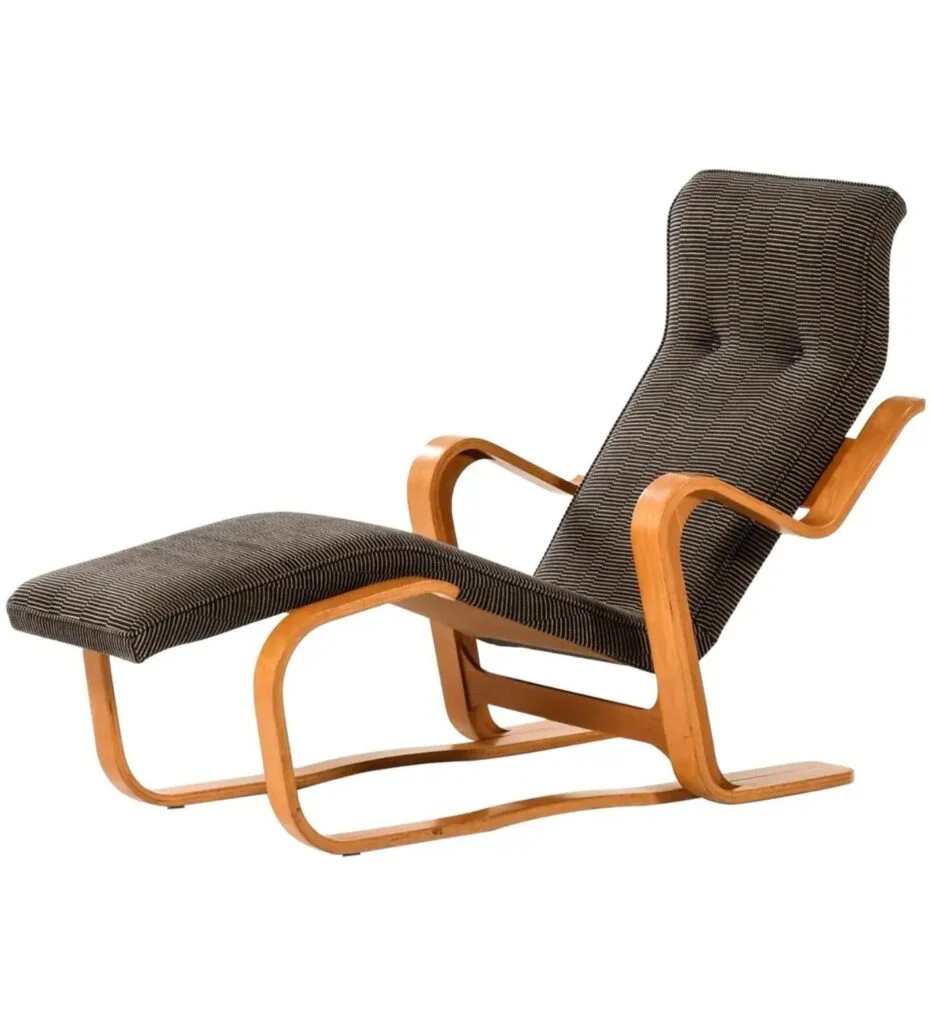
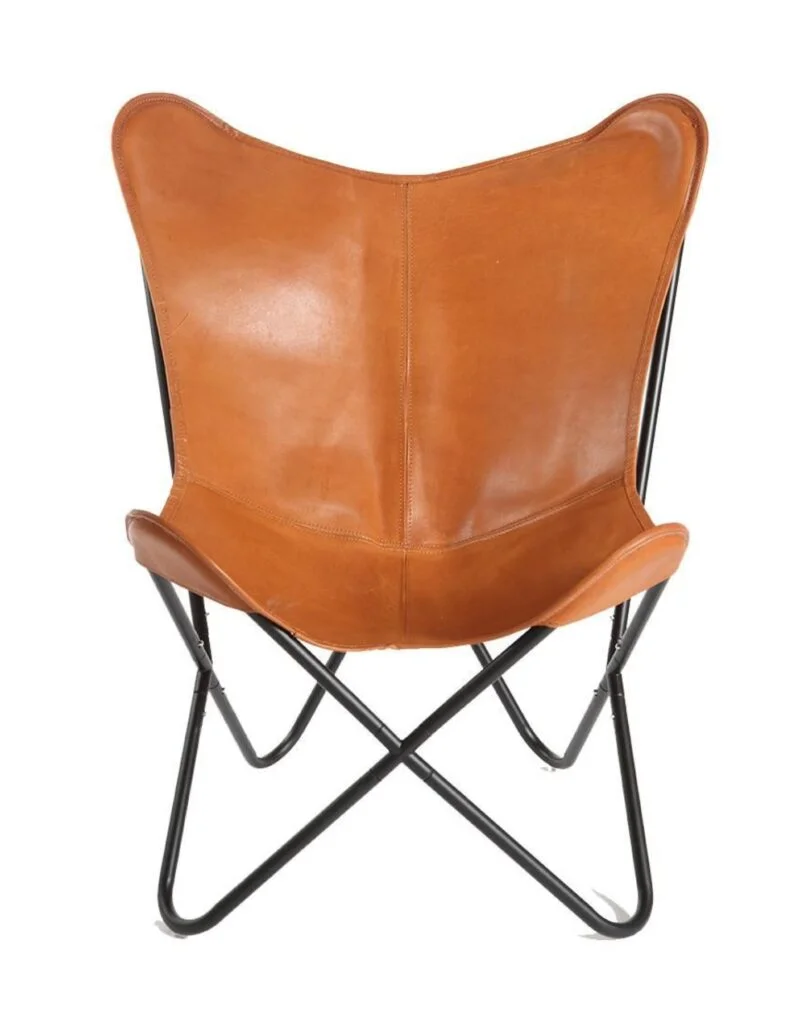
Palermo ‘Butterfly’ Chair
Designer: Argentine architects
Year: 1938
Did you know this folding chair has quite an interesting design history? It was designed by Grupo Austral, a group of three architects who met while working for Le Corbusier in Buenos Aires in 1938. There is no doubt that it is one of today’s most popular mid-century modern boho chair designs.

Fauteuil de Salon
Designer: Jean Prouvé
Year: 1939
The Fauteuil de Salon features a smooth seat surface and backrest that combine simple design touches to create a unique unified architectural object. It is a typical example of the distinctive structural aesthetic of the designs of Jean Prouvé, which was found in the archives of the French engineer.
Eames Molded Plywood Lounge Chair LCW
Designer: Charles and Ray Eames
Year: 1945
Charles and Ray Eames moved to Los Angeles after graduating from Cranbrook Academy in Michigan. There, they experimented with brand-new materials and furniture-making processes. As a result of this experimentation, they developed the “Kazam! Machine,” which pressed thin wood veneer sheets together and bent them. This process resulted in the LCW, which has a cradled back and seat that fits anyone.
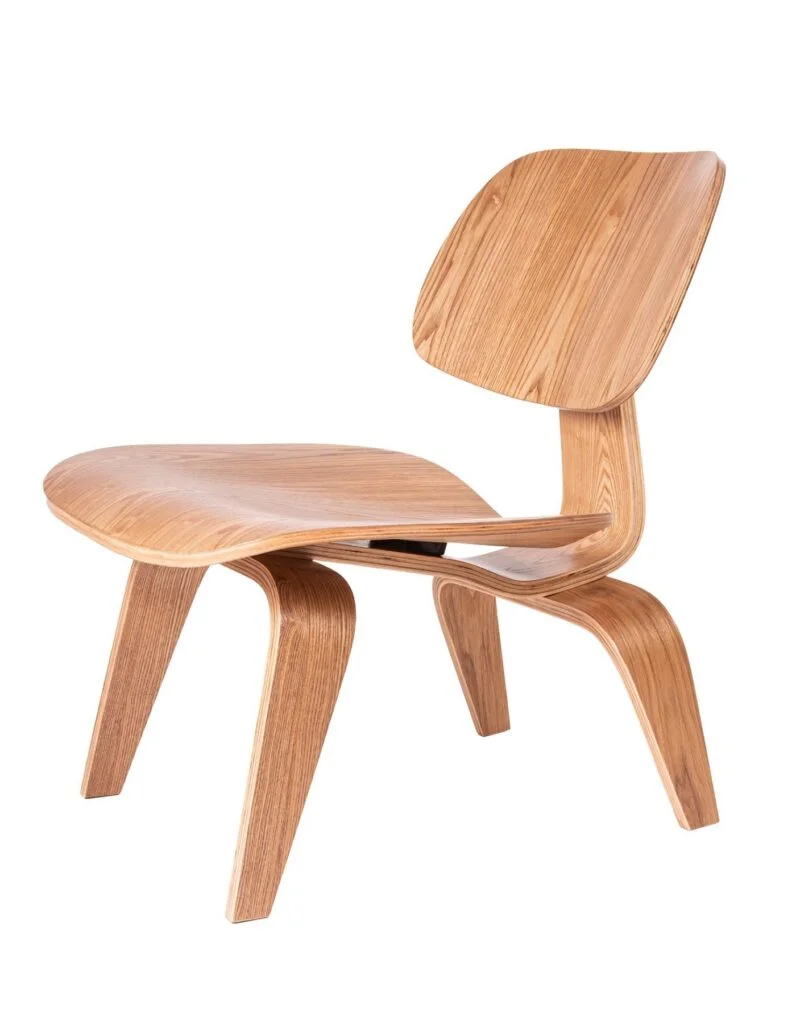
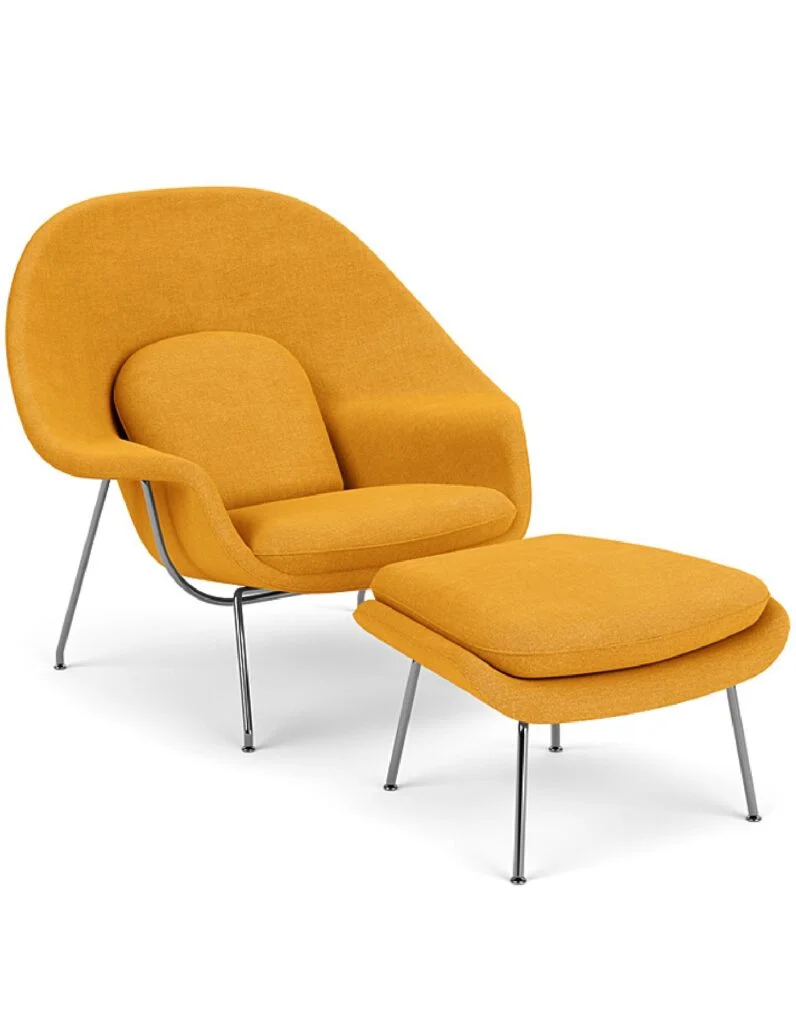
Womb Chair & Ottoman
Designer: Eero Saarinen
Year: 1946
When Eero Saarinen first began working with Florence Knoll, she challenged him to create the world’s most comfortable chair. He wondered, what could be more comfortable than the womb? The chair was introduced by Knoll in 1948 and has been produced continuously since then.
Wishbone Chair
Designer: Hans J. Wegner
Year: 1949
A series of photographs of Chinese tradesmen in the 1940s intrigued Danish designer Hans Wegner — and inspired his design of the chairs they were sitting on. He set about creating his own version of the Ming chair, incorporating a curved, bent-wood armrest and the namesake back, whose pronged wishbone shape allowed for a more graceful silhouette.
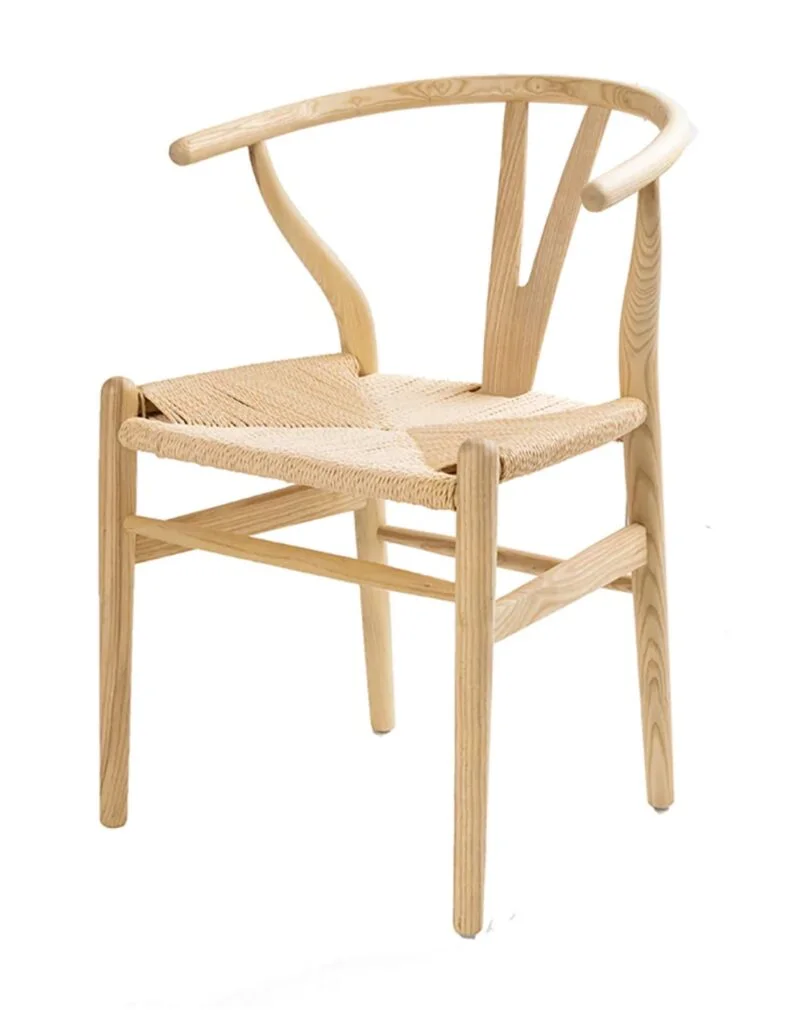
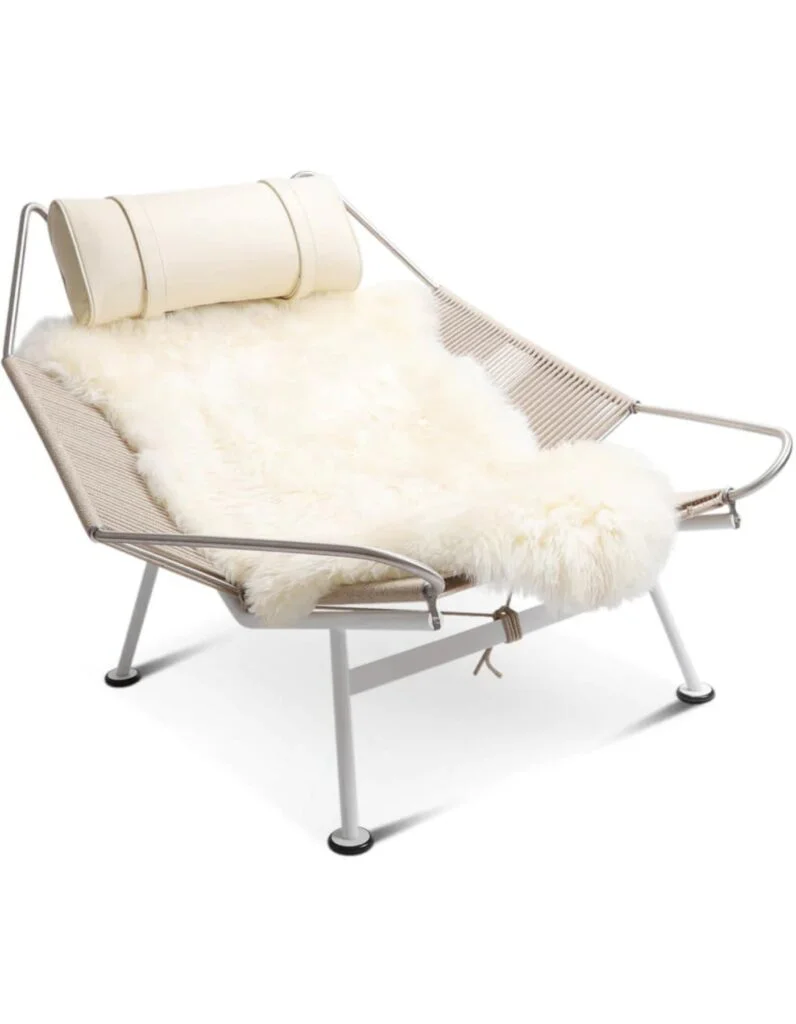
PP225 Flag Halyard Chair
Designer: Hans J. Wegner
Year: 1950
A solid stainless steel frame and 240 meters of specially developed flag line form the seat, making the Flag Halyard Chair a masterpiece of luxury and relaxation. Although Wegner prefers wood, he pays homage to early modernists such as Le Corbusier, Mies van der Rohe, and Marcel Breuer by using stainless steel with the same elegance as he does wood.
CH25 Lounge Chair
Designer: Hans J. Wegner
Year: 1950
The Hans Wegner CH25 design from the 1950s is a timeless example of the designer’s functionalism. The lines of the chair are naturally elegant. The seating can be woven or padded, depending on style and aesthetic. The chair is clean and simple in it’s signature shape. It’s aptly called the “Easy Chair.”
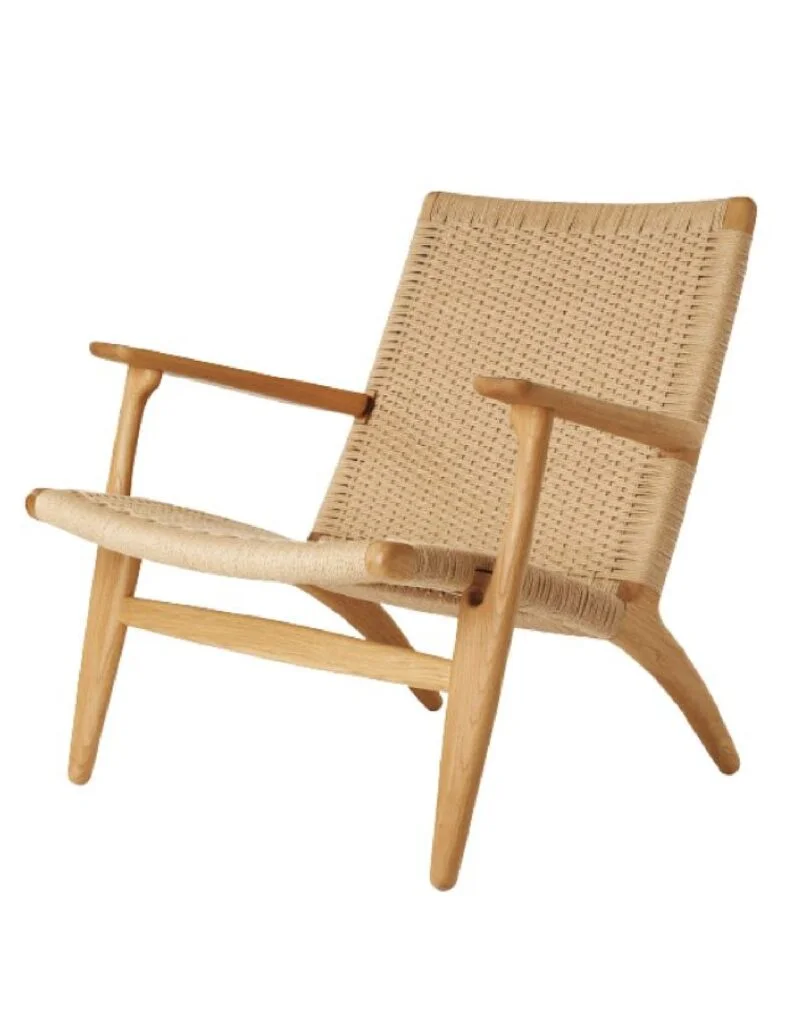

Bertoia Diamond Lounge Chair
Designer: Harry Bertoia
Year: 1952
The Diamond Chair was part of Harry Bertoia’s Bertoia Seating Collection for Knoll. The design inspiration came from Bertoia’s desire to create furniture that straddled the line between art and function. “If you look at the chairs, they are mainly made of air, like sculpture,” Bertoia said. “Space passes through them.” This model is ergonomic for sure, but if you’re looking for premium comfort, a fully upholstered version is also available.
Coconut Chair
Designer: George Nelson
Year: 1955
While Nelson may be best known for his clocks and storage units, Herman Miller’s furniture renaissance man also crafted a timeless chair with the Coconut. The Coconut Chair, with its shell base that looks like a slice of its eponymous fruit, remains a popular conversation piece. The chair’s radical form, however, served a specific purpose, as it was designed to allow people to sit in any way they wished.
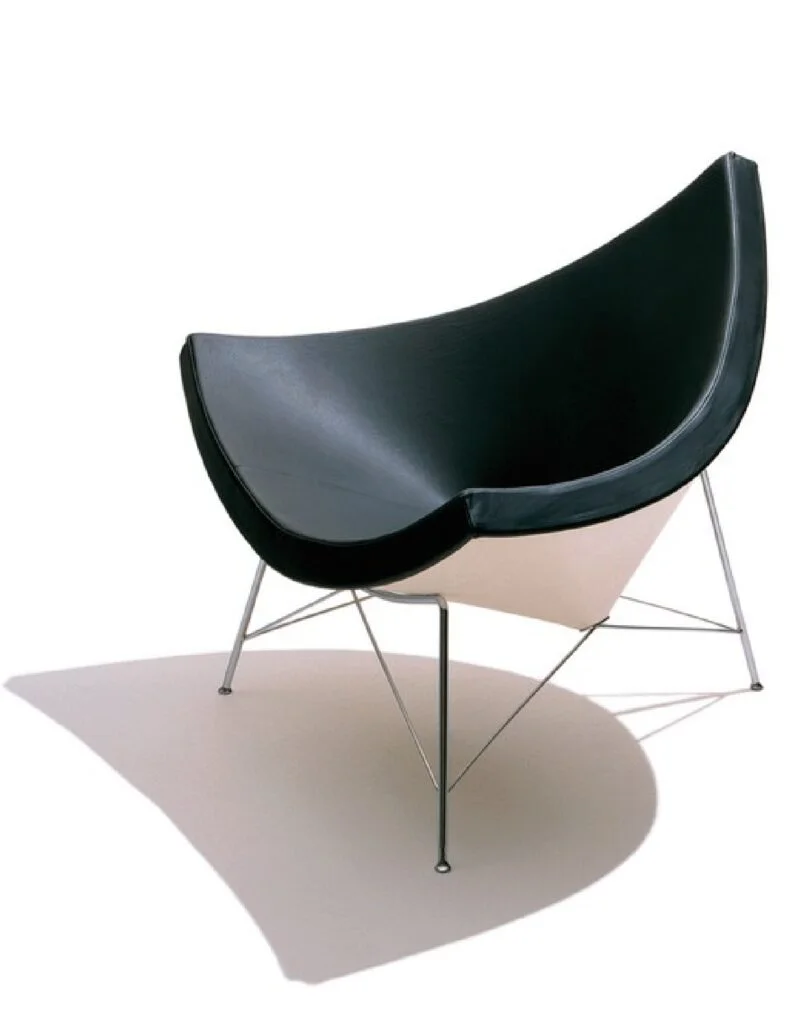
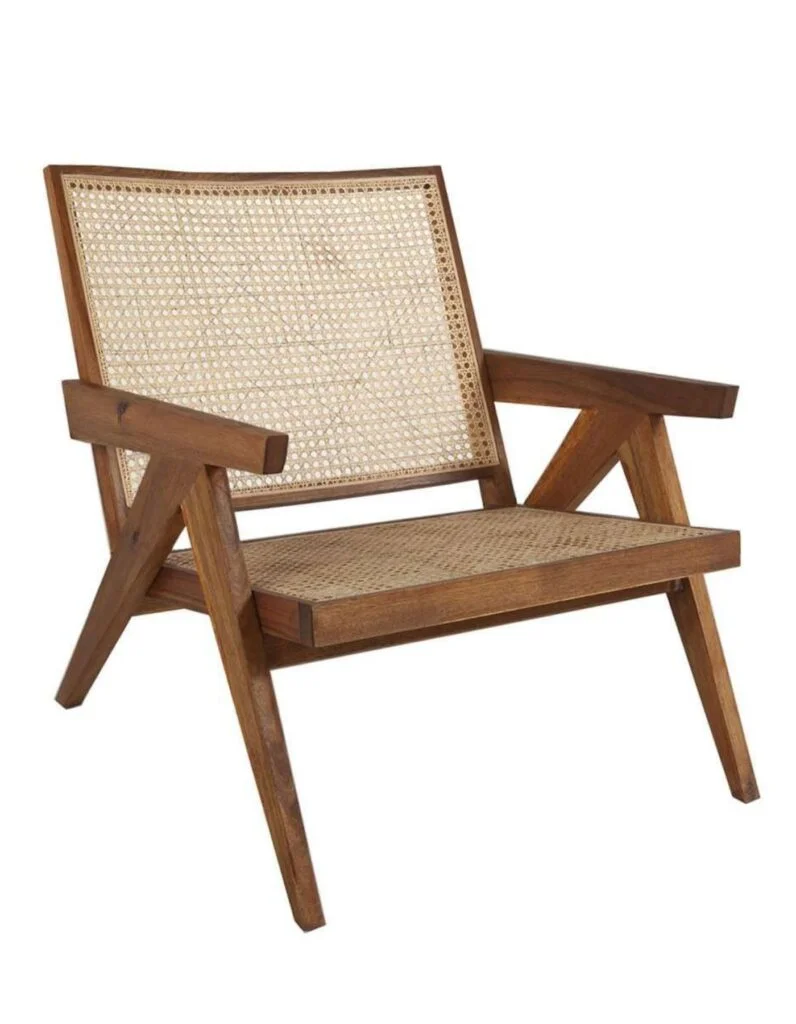
Easy Armchair
Designer: Pierre Jeanneret
Year: 1955
Designed by Pierre Jeanneret for a set of administrative buildings in Chandigarh, India, the original versions of these cane-and-wood chairs are some of the most sought-after by vintage collectors today. Often called Jeanneret chairs, they were produced en masse in the 1950s but, by the end of the 20th century, were being sold for next to nothing in India. With the rise of interest in midcentury design came a renewed demand for them—and they now fetch thousands at auction. However, you can easily find high quality reproductions made by many furniture store.
Kangaroo Chair
Designer: Pierre Jeanneret
Year: 1955
The Kangaroo Chair was originally created for the capital city of Chandigarh, India, which Jeanneret architected in collaboration with his famed cousin Le Corbusier. The chair’s design contrasts clean, geometric lines with material warmth, combining a solid wood frame with Viennese cane details. Now produced by Cassina, this low-slung seat is part of the Italian manufacturer’s Homage to Pierre Jeanneret Collection.

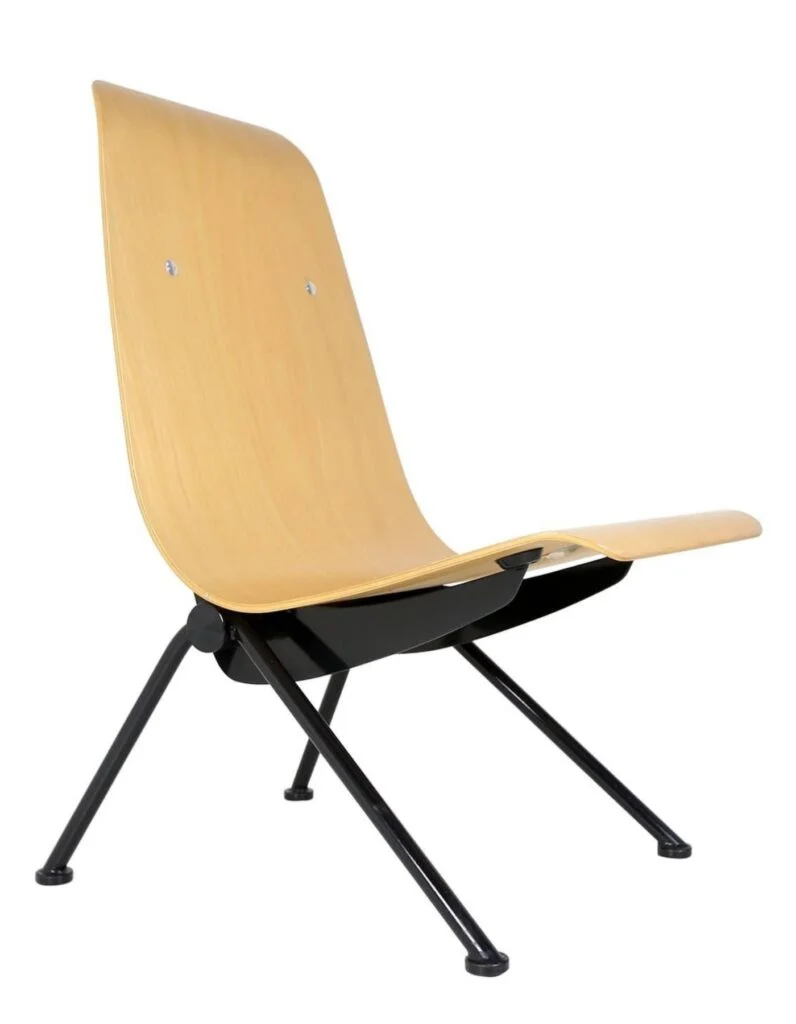
Antony Light Chair
Designer: Jean Prouvé
Year: 1955
Early in the 1950s, French metalworker and self-taught architect Jean Prouvé created the Antony chair for the Cité Universitaire in Antony, close to Paris. This little armchair was one of the final pieces of furniture the French designer produced. It has a dynamically curved hardwood shell and a distinctive metal base. Although obtaining an original model of this chair is now nearly impossible, Vitra has been re-producing designs by this legendary French designer since 2002.
Eames lounge chair & Ottoman
Designer: Charles and Ray Eames
Year: 1956
If just one chair could characterize the MCM movement, it should be this one. The famous lounge chair by Charles and Ray Eames is undoubtedly the most recognizable piece of furniture to come out of the mid-century modern era. The aim behind the chair was to build the most comfortable chair possible, one that contour to totally wrap the body and provides the sense of a “well-used first baseman’s mitt.” For nearly 60 years, this classic lounger has served as a calling card for furniture connoisseurs who value design, status, and comfort.
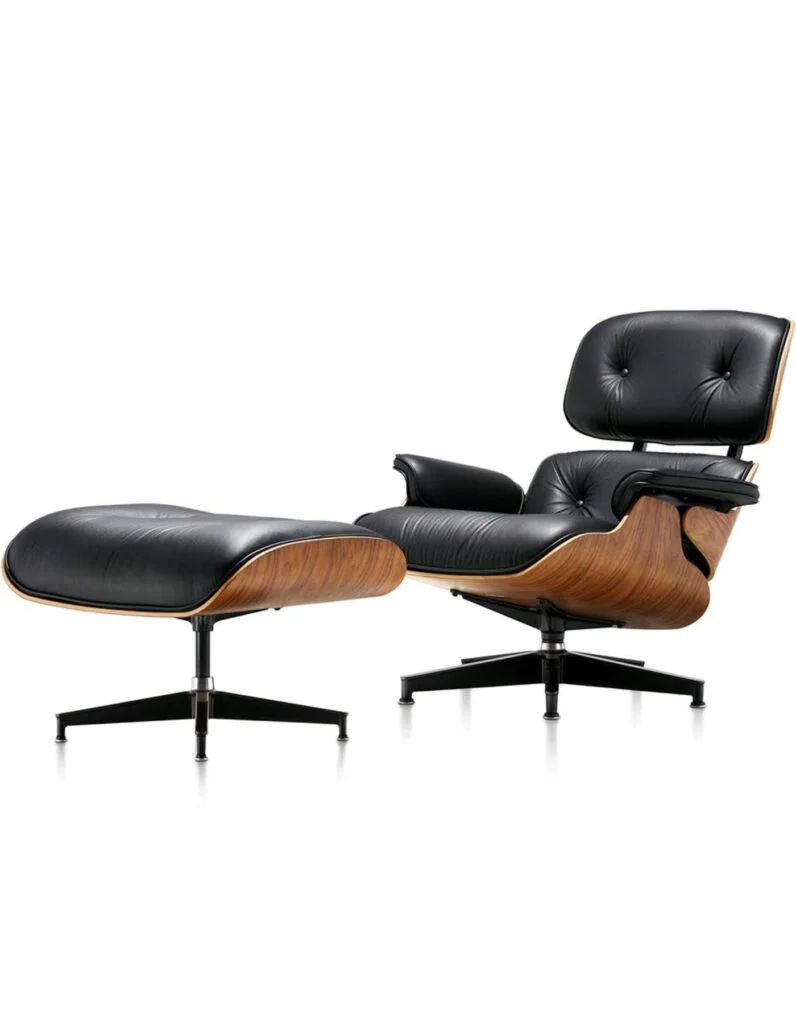
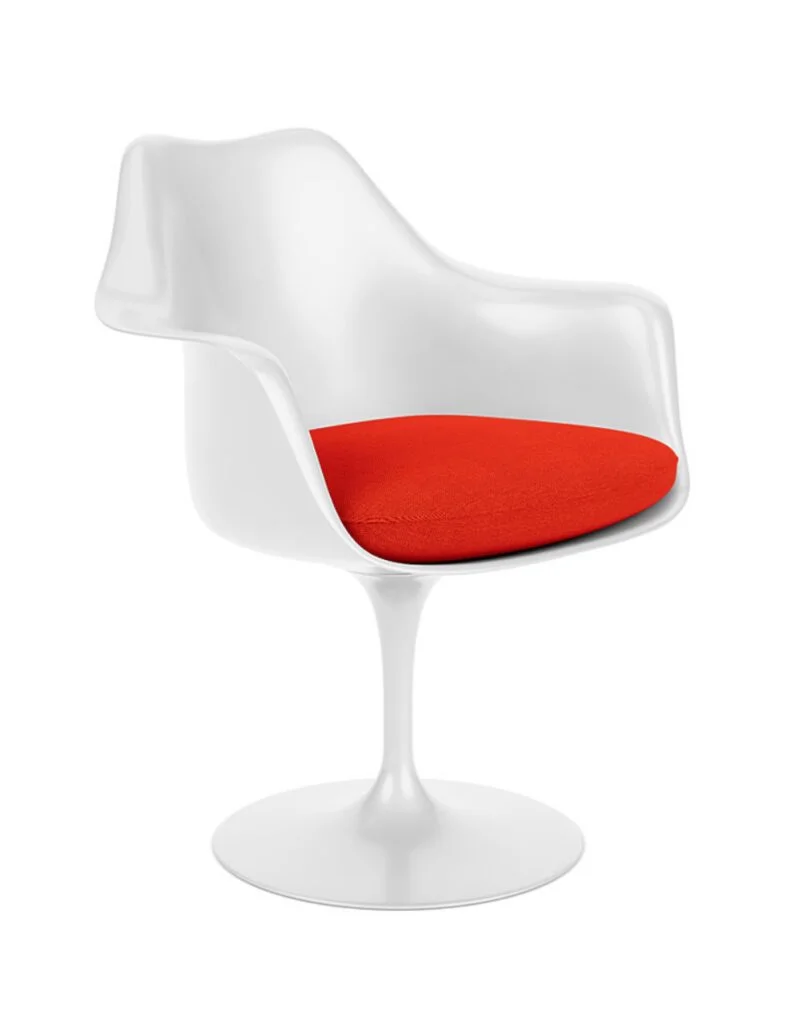
Saarinen Tulip Armchair
Designer: Eero Saarinen
Year: 1957
Eero Saarinen, a Finnish-American architect and designer, despised the sight of many table and chair legs in a space, calling it a “ugly, perplexing, unrestful environment.” In an effort to reduce the number of essential supports, Saarinen created the Tulip series, which replaces four legs with a single central pedestal that supports a sculptural seat suggestive of its namesake flower. The tulip chair is typically white with a contrasting color for the seat cushion. The curving features of this chair may make it appear space-age and futuristic.
Egg Chair
Designer: Arne Jacobsen
Year: 1958
The dramatic wings and embracing curves of the Egg Chair were intended to provide privacy in public areas, since the chair was originally built for the SAS Royal Hotel in Copenhagen. As an outcome, sitting in one of these majestic beasts gives you the sensation of being in your own planet, making it a fantastic sanctuary for today’s hectic existence. The smooth, sculpted contour of the chair contrasts with the rough geometric shapes of more traditional mid-century modern furniture.
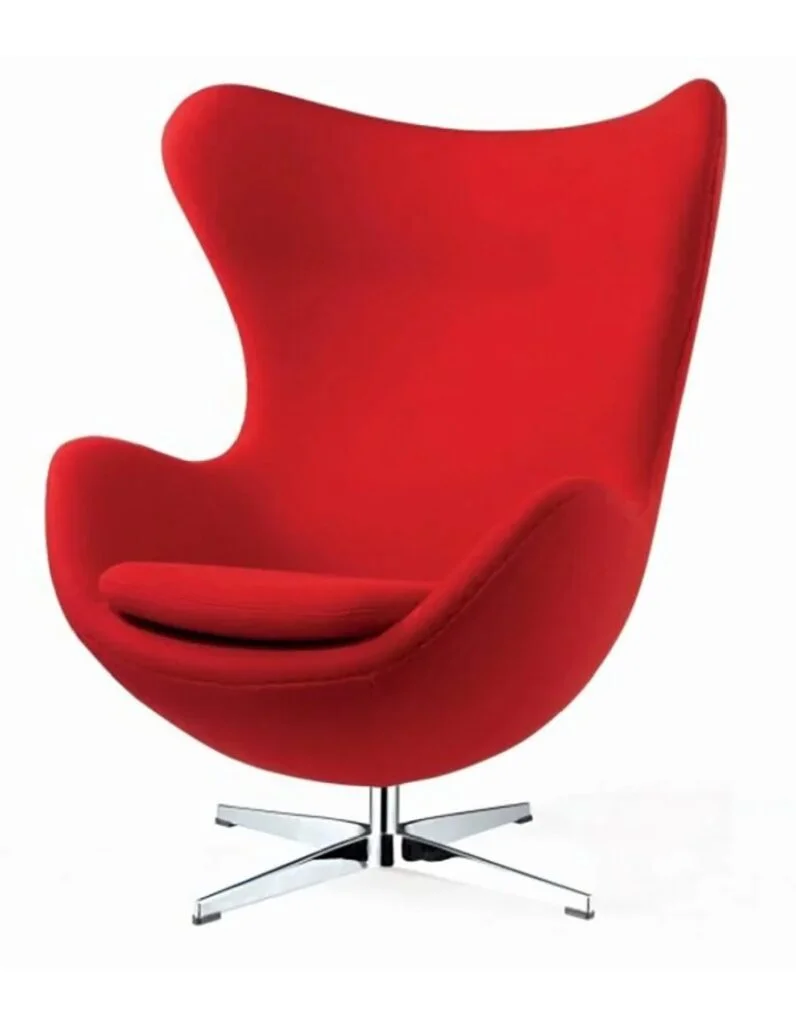
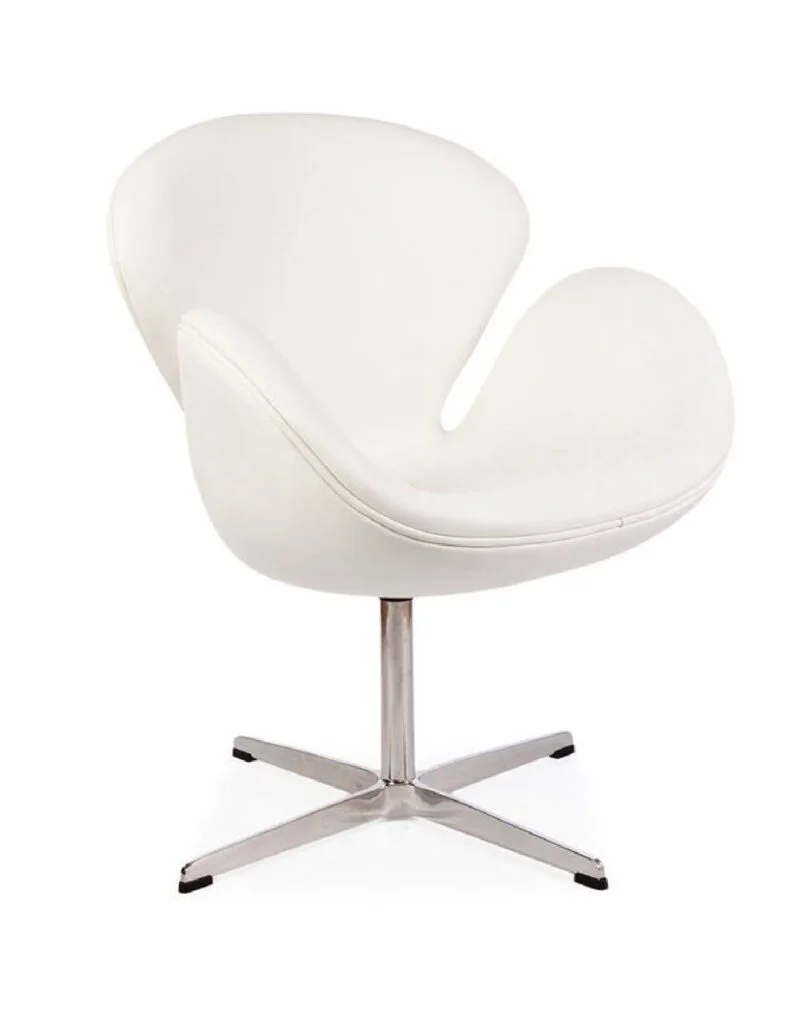
Swan Chair
Designer: Arne Jacobsen
Year: 1958
Even if you have no idea what mid-century modern design is, chances are you can tell by looking at this chair that it is MCM. Its organic flowing contours and fun form look like they belong in the swinging sixties. The Swan chair, with its swiveling base and slightly reclined posture, seems like a cross between an office chair and a lounge chair, and no one would think you were insane if you used it for both.
Spanish Chair
Designer: Børge Mogensen
Year: 1958
It’s funny that something dubbed The Spanish Chair has come to be associated with Danish design. Børge Mogensen was inspired by the ancient technique of creating furniture in Spain, which featured the use of robust leather to make the seat as part of a wooden structure – hence the name of what went on to become one of Mogensen’s most recognized designs.
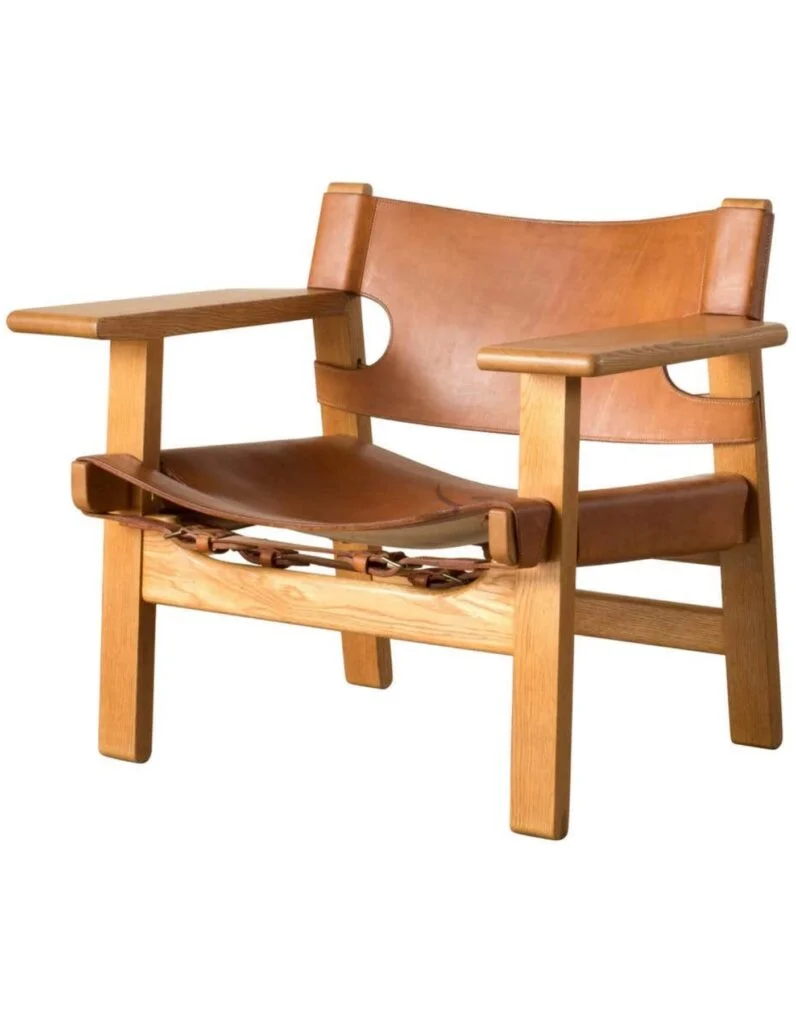

Orange Slice Armchair
Designer: Pierre Paulin
Year: 1960
The Orange Slice Armchair has been on the market since 1960, although it initially appeared approximately a decade earlier, when the French designer began employing the folding plywood technology. Soon after, what has become an iconic part of modern design debuted. The “slices” of the lounge chair are an interplay of compositions and viewpoints. Orange Slice has a distinct profile when viewed from different angles.
CH07 Shell Chair
Designer: Hans J. Wegner
Year: 1963
This chair, often known as the “smiling chair,” is the perfect blend of comfort and elegance. The Shell Chair is one of the more pleasant pieces of art you may have in your house, with its softly curved seat made of molded plywood, curved back, and relaxing lounging posture. This is a fantastic low-key statement piece for anyone who doesn’t want anything too flamboyant and is available in a variety of finishes and materials.
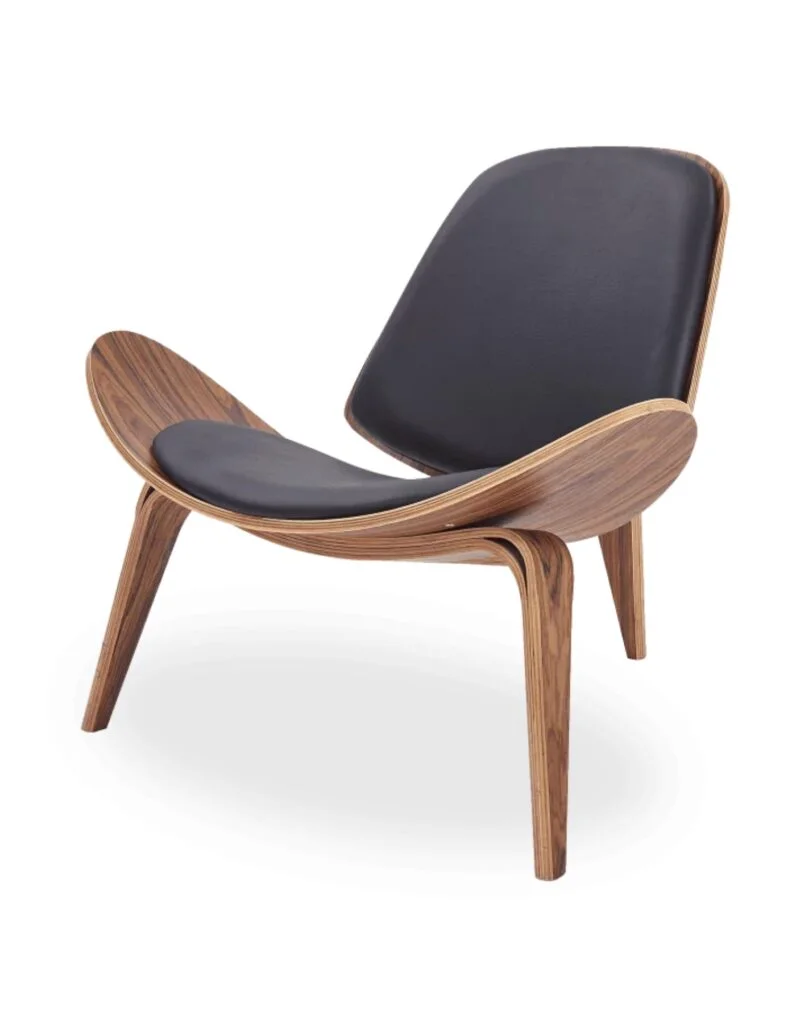

Ball Chair
Designer: Eero Aarnio
Year: 1963
The futuristic form of the Ball Chair, far from being a piece of furniture for aficionados of modest designs, was a popular in the mod 1960s and immediately became a focus of trendy modernist houses. It is a spherical chair that has been sliced in half to allow someone to sit comfortably inside it while being covered in the chair’s cocoon. Aarnio was motivated to design a chair that he and his wife could both sit on comfortably. In order to get a simple design, he used the most basic shape possible and produced an icon in the process.
Corona Chair
Designer: Poul M. Volther
Year: 1964
Poul M. Volther’s Corona Chair is an unusual twist on Danish design. The Corona is a geometry lesson that is sculptural, eye-catching, and unique. As a result, the seat pads are elliptical in shape and declining in size. The chair’s daring design, like that of other MCM objects, wasn’t simply for appearance. The chair was designed after a human spine and ribs, making it as comfy as it is eye-catching.
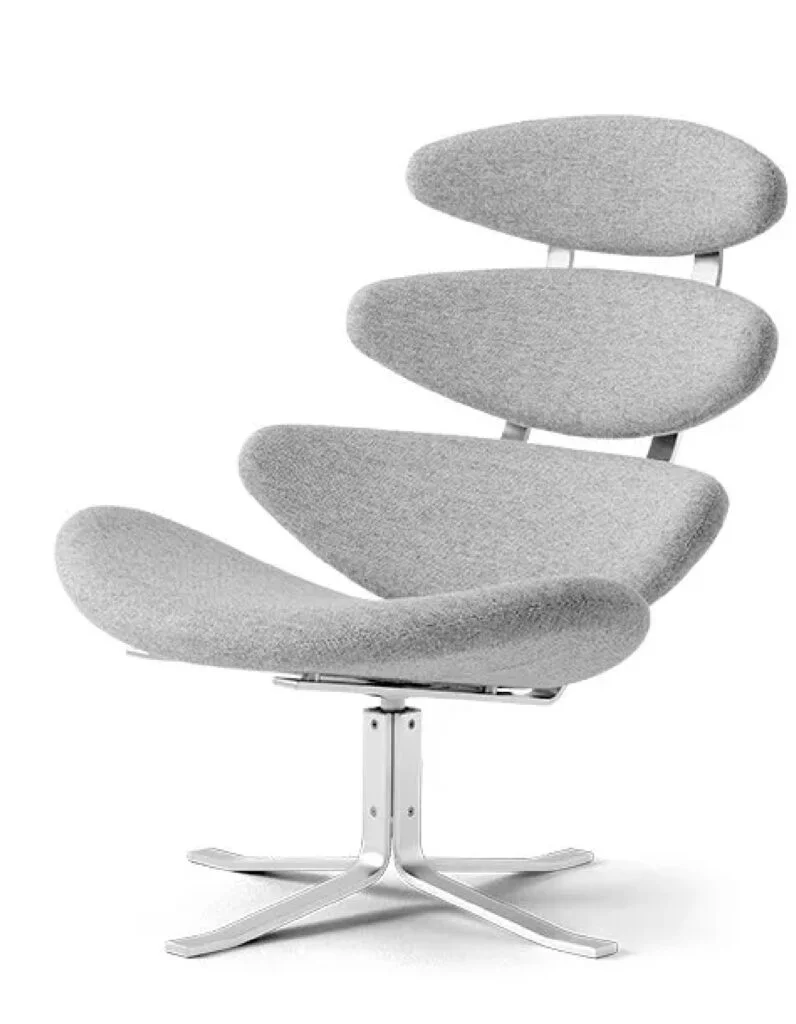
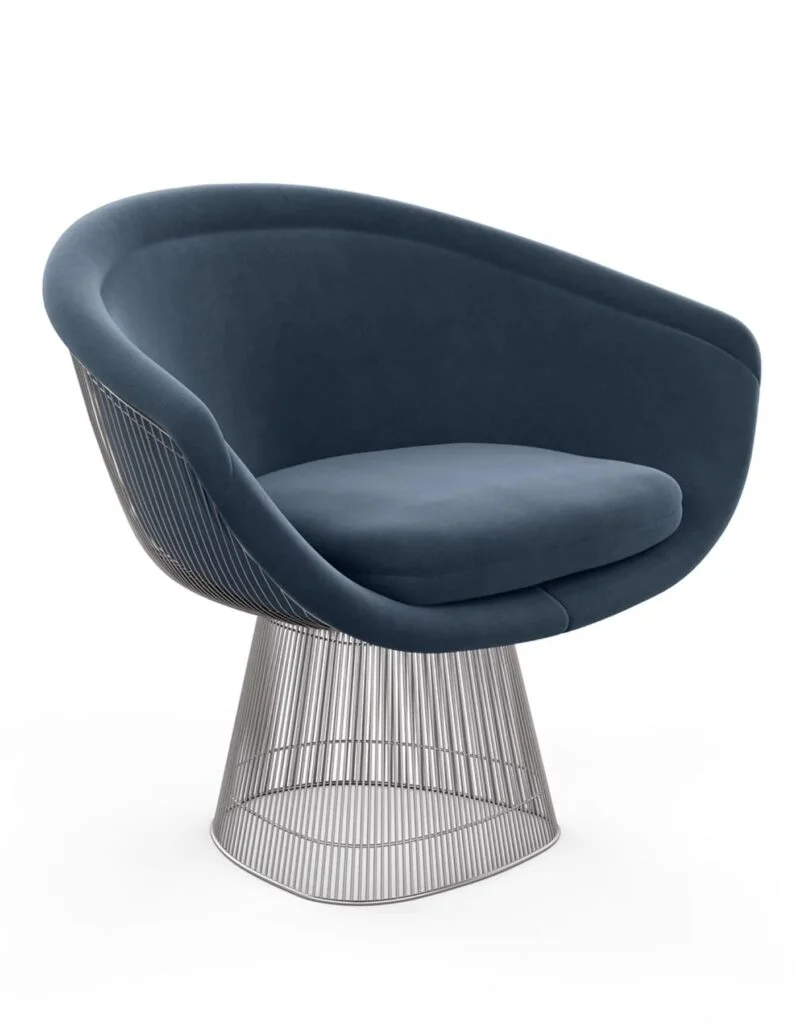
Platner Lounge Chair
Designer: Warren Platner
Year: 1966
Few Mid Century Modern designers mixed materials as beautifully as Warren Platner. The designer combined steel rods with a foam-padded and upholstered fiberglass shell for his eponymous Knoll series, leaving the entire structure exposed for maximum contrast. Platner’s mastery of the craft is demonstrated by the industrial look’s ability to preserve a warm and friendly presence. The Platner Lounge is still quite fashionable today, proving that excellent design is timeless.
Panton Chair
Designer: Verner Panton
Year: 1967
The Panton chair, sometimes known as the “Stacking Chair,” was the first chair manufactured entirely of plastic in a single piece. The chair’s form is surely unusual and eye-catching. Although plastic has lost some of its shine, the Panton’s pleasing contours and gravity-defying posture continue to turn attention far into the twenty-first century.
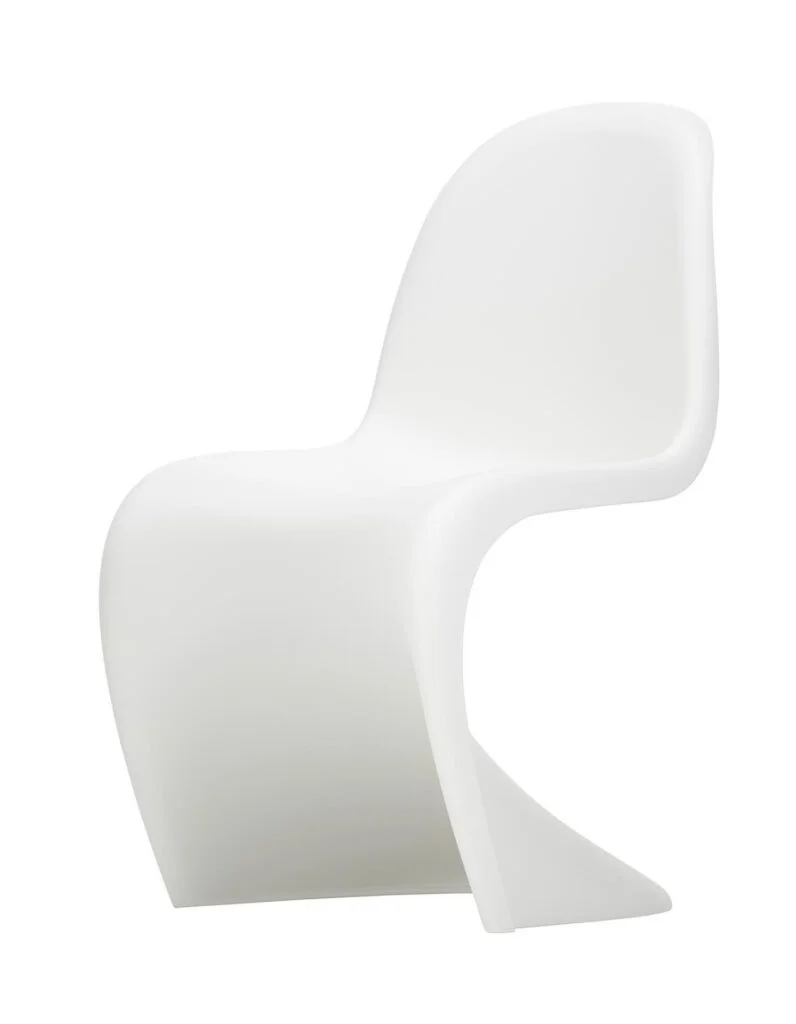
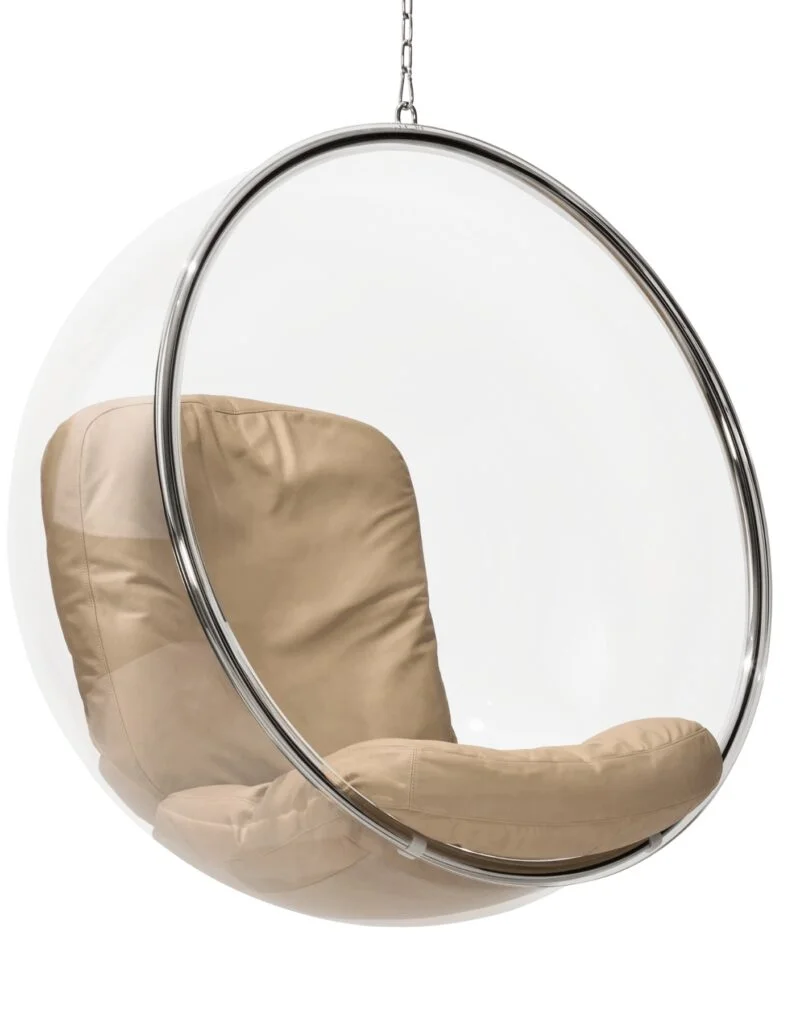
Bubble Chair
Designer: Eero Aarnio
Year: 1968
In 1968, Eero Aarnio expanded on his cocoon-like designs by designing the Bubble chair. The Bubble chair, which resembles a sci-fi device that can even defy gravity, was suspended from the ceiling by a hefty chain and was nearly fully translucent. It was not only drastically different from any chair notion before conceived: it hung from the ceiling rather than being supported by the floor, but it also used a novel – and quite futuristic – material for the time: acrylic plastic.
Up5 Lounge Chair & Up6 Ottoman
Designer: Gaetano Pesce
Year: 1969
Gaetano Pesce had the inspiration for the Up chair while showering. “I was holding the sponge,” he explained. “When I pushed the sponge, it shrunk, and when I let go, it expanded back to its original size.” This image prompted him to design the pop-up chair. It was made of polyurethane, which was a groundbreaking material at the time. The Up chair could be compressed to one-tenth its original size for transportation, then permanently pop back into shape once opened. The chair’s most notable feature, however, was not its material innovation, but rather its form.
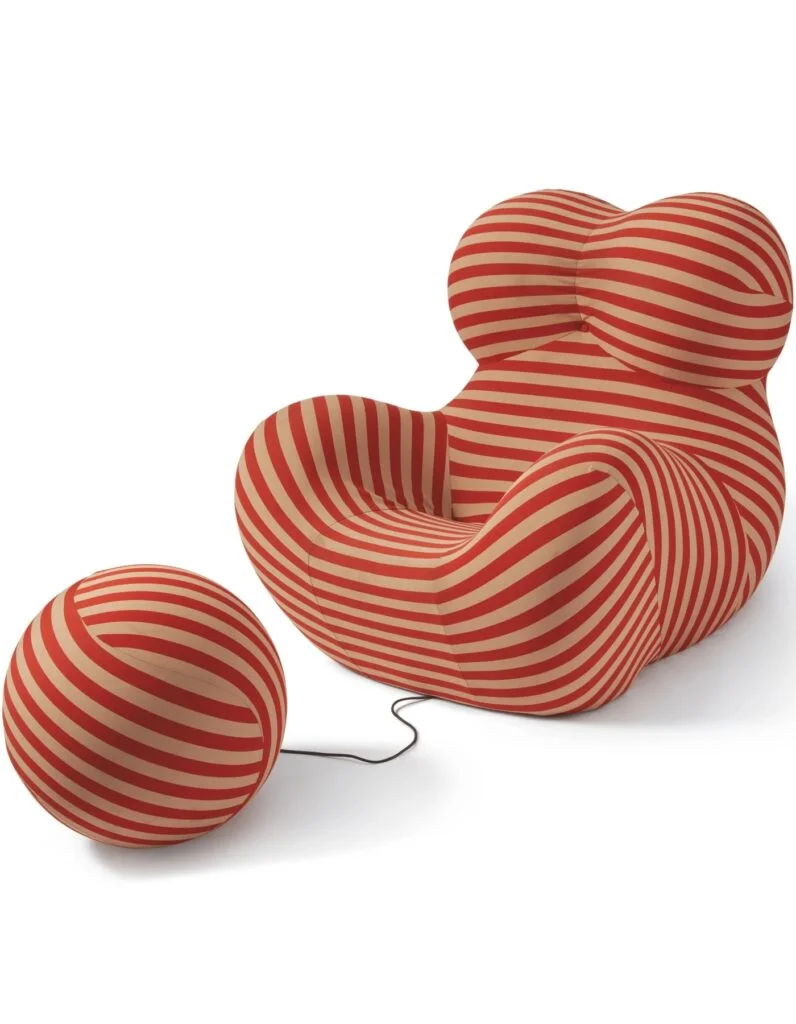
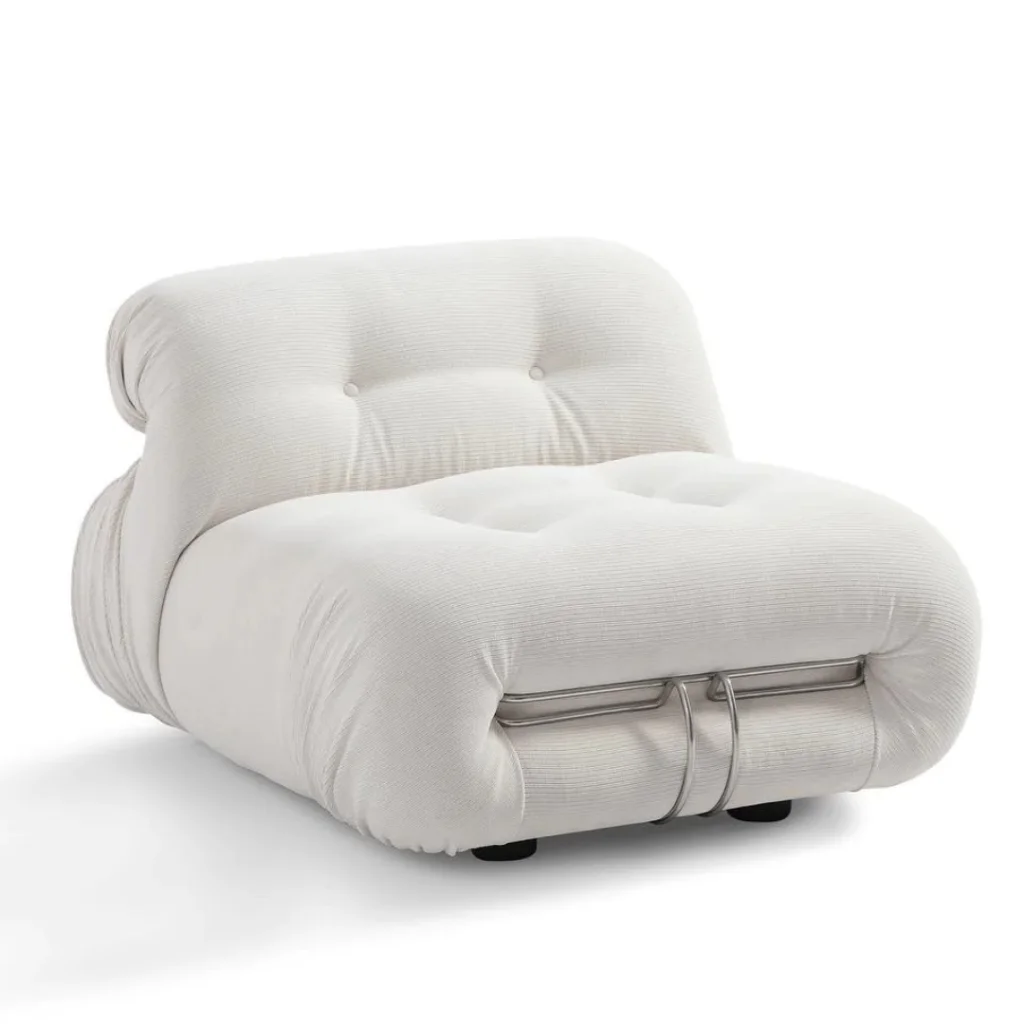
Soriana Lounge Chair
Designer: Afra & Tobia Scarpa
Year: 1969
A unique armchair with soft, generous contours, designed in 1969 by Afra and Tobia Scarpa which changed the face of upholstered furniture.
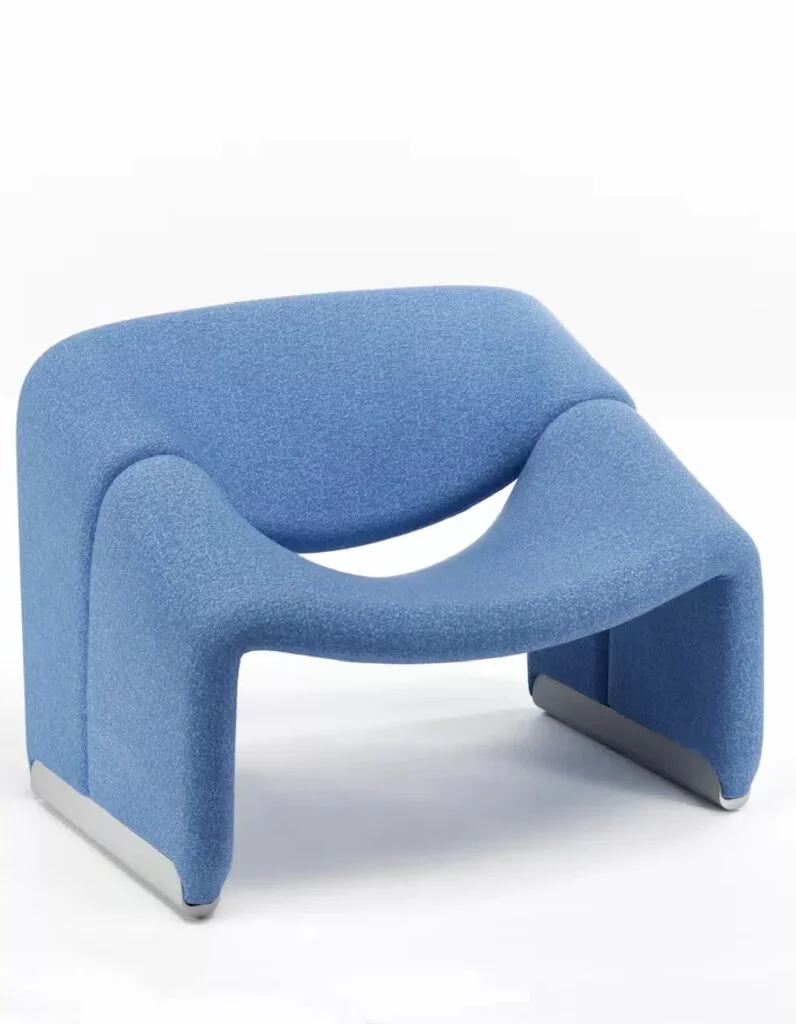
Groovy Chair
Designer: Pierre Paulin
Year: 1973
The Groovy Chair, with its whimsical curves that hold you gently in a variety of sitting positions, will quickly become your favorite spot to relax. In 1964, French designer Pierre Paulin created the first iteration of this chair, the F580 model. Over the next decade, he refined its shape, launching the F598 in 1973, which is still in production today.
Maralunga 675 Armchair
Designer: Vico Magistretti
Year: 1973
If it’s classic Italian style you’re after, look no further than Maralunga. Originally designed in 1973, it was the first lounge collection to boast adjustable backrests, imbuing a once static object with new movement and life. A cool origin story coupled with generous cushions and considered comfort have ensured it remains a firm favorite for contemporary living rooms.
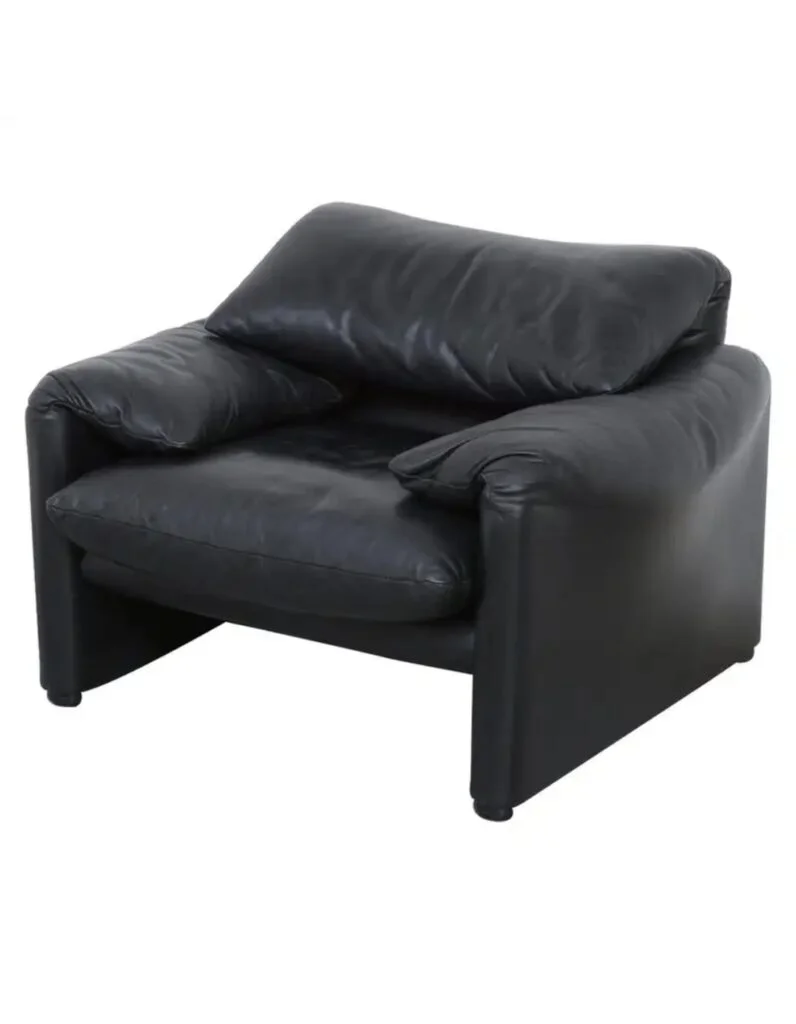
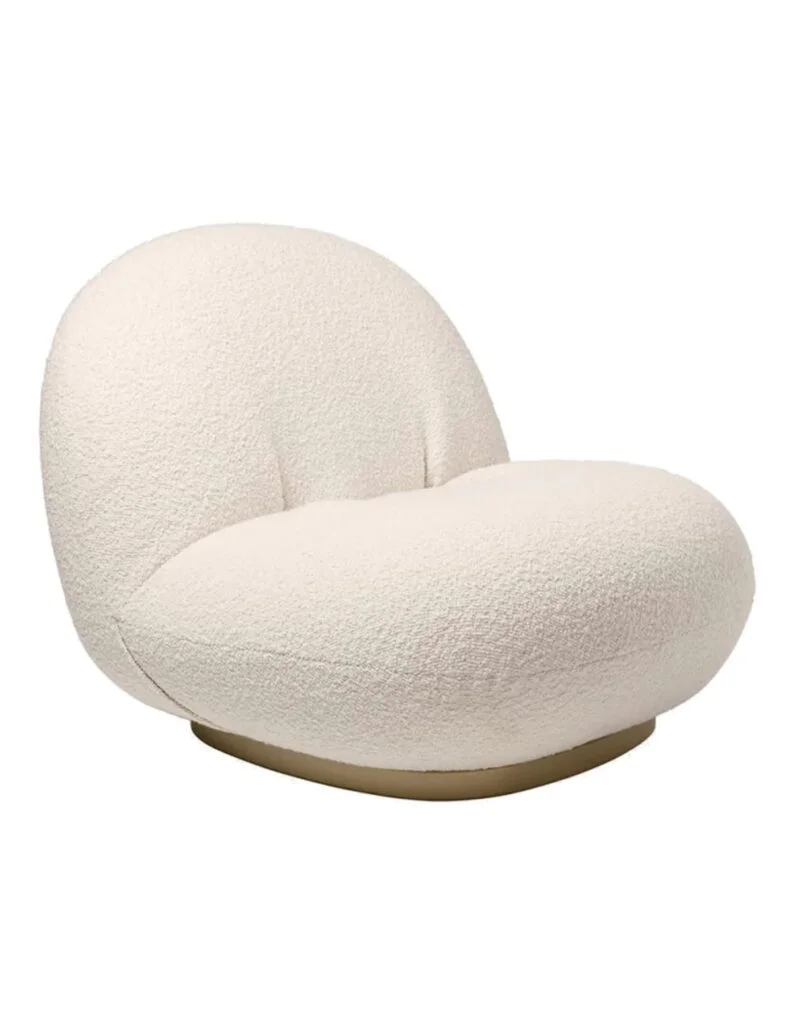
Pacha Chair
Designer: Pierre Paulin
Year: 1975
While designing this chair, Pierre Paulin, was inspired by clouds to try to give the sensation of sitting on a cloud. The shape of the seat is sturdy, also due to the absence of legs, but the metal base and the seams of the foam and upholstery give it an elegant yet welcoming appearance. The armchair also manages to be comfortable despite being without armrests and having small dimensions.
Note: One thing you’ll notice when shopping for mid century chairs is that original designs from this era are hardly affordable, as they are considered to be timeless works of art that will last you a lifetime. So If you’re on a budget, you can checkout this guide for a curation of the best MCM chairs alternatives in the market.
People Also Ask These Questions About The Most Iconic Mid Century Modern Chairs
Q: Are Eames chairs mid-century modern?
A: If just one chair could characterize the MCM movement, it should be this one. The famous lounge chair by Charles and Ray Eames is undoubtedly the most recognizable piece of furniture to come out of the mid-century modern era.
Q: What are mid-century chairs?
A: Mid Century Modern chairs are marked by simple geometric and organic shapes that fuse form and function. The Mid-Century modern furniture designs introduced a new wave of simple, sleek designs that stripped away anything that did not serve a specific purpose.
Q: What is the most famous chair in the world?
A: By far, the most famous chair in the world is the Eames Lounge Chair. The Eames couple pioneered bent-plywood furniture at Cranbrook Academy of Art, which they used to design their iconic lounge chair in 1956.










